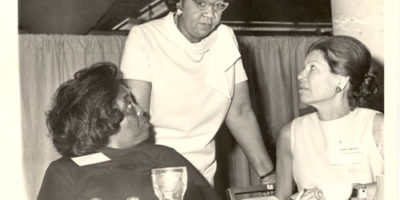Rape in Satmar Brooklyn
A young Satmar woman from Williamsburg stands in a Brooklyn courtroom. Rayna (not her real name) faces her abuser and speaks what so many survivors cannot voice. “He watched me when I was young. He waited for me and said he knew I was going to come to him and he couldn’t wait for the day.” She says her abuser, Nechemya Weberman, had a predatory plan that had been in place since her sheltered childhood.
Allison Yarrow’s gripping e-book, The Devil of Williamsburg (Amazon), presents an important work of investigative journalism, based on intensive reporting of Weberman’s 2013 trial.
Yarrow’s depiction of hipster-strewn Williamsburg spotlights the stringent traditions of the Satmar community. “In Satmar Williamsburg, there is no president, no Internet. Just God. Religious laws govern life. All of it.” The rules are clear and the consequences dire: “Good, obedient girls did well and made strong matches. Wayward girls were lost — to the community, and to God.”
In 2007, at the age of 12, Rayna was caught texting and talking on a phone with her first male crush. She was sent to counseling with Nechemya Weberman by her parents and her yeshiva, “who would later threaten to end her education if she refused appointments with Weberman.” Weberman was viewed as a “revered leader and a counselor of wayward youth.”
Yarrow’s work points out that “Children like Rayna who buck, question, and disobey religious strictures are relegated to attend costly ‘spiritual therapy’ with esteemed community men who are not licensed therapists or even life coaches.”
Four years and hundreds of rapes at the hands of Weberman later, Rayna reached the heartbreaking conclusion that the “outcome of abuse is in a way far worse than murder. With murder, the person is dead and it is final. By abuse the victim experiences death over and over, again and again.”
Yarrow does not simplify these heinous crimes. While right and wrong are clear, crimes of sexual abuse are complex and multilayered, with coercive ideologies that the victims often believe to be truth. Yarrow describes how Weberman used Jewish teachings to delude Rayna and justify his behaviors: “A scholar of Jewish mysticism, Weberman told her they had been beshert, soul mates, in a previous life, and that fate had orchestrated their reunion.”
As Rayna reaches a turning point, she decides to speak out in a court of law, no matter the consequences to herself and her family. This is no small feat, considering the typical response to sexual abuse in the Satmar community. “Special committees mediate disputes among adherents — from debts owed to sex-abuse accusations…Victims who try to pursue justice outside the community are stymied, then shunned.”
The Satmar community decries Rayna’s decision to speak out. Weberman’s wife “still believes her husband fostered these girls out of duty and love, reorienting them to the Satmar way, and ultimately saving their lives,” though Brooklyn District Attorney Charles Hynes described the Weberman case as “some of the worst victim intimidation he had ever seen in his near quarter-century in office.” The culmination of the victim-bashing is not merely the threats to Rayna’s family, her father’s loss of business, and nieces’ removal from their schools, but that the Satmar Rebbe, Aaron Teitelbaum, says in a speech to thousands, “A Jewish daughter has descended so low, terrible!”
Despite the threats and intimidation, Rayna continued onward in her testimonies. At the end of a two-week trial, Weberman was found guilty of 59 counts of child sexual abuse and endangering the welfare of a child, ending with a 103-year sentence. This conviction, setting a precedent as the heftiest given in the Satmar community for such a crime, seems to set an example for what Hynes called, “a communal wakeup call.”
In the end, though, Yarrow appears to hold hope for Rayna — as a young woman who can never forget the acts of abuse in her mind, and yet is a brave, resilient and recently-married female, who very much has a future ahead of her. In Yarrow’s last image, she describes a beach date between Rayna and her husband, depicting a new world that still holds tradition dear. “Together they tumble, straight into the water, with all their clothes on.”
Yarrow’s essay lets loose the devastating, convoluted emotions that sexual abuse engenders, leaving the reader not with tidy conclusions, but rather with a picture of a young woman — just a girl at the time her abuse began — who is able to move forward with both pain and courage.
Ilana Kramer is a writer and clinical psychologist who specializes in trauma.




